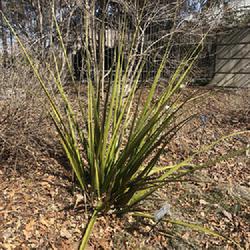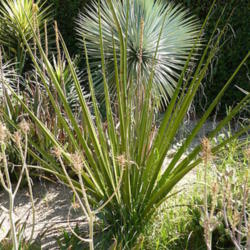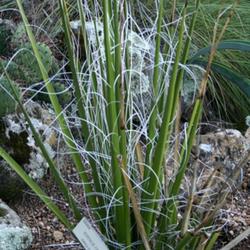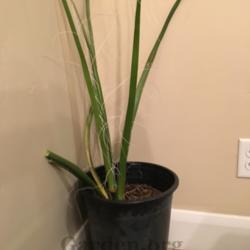| Plant Habit: | Cactus/Succulent |
| Life cycle: | Perennial |
| Sun Requirements: | Full Sun Full Sun to Partial Shade |
| Water Preferences: | Mesic Dry Mesic Dry |
| Minimum cold hardiness: | Zone 7a -17.8 °C (0 °F) to -15 °C (5 °F) |
| Maximum recommended zone: | Zone 11 |
| Plant Height: | 4 to 6 feet |
| Plant Spread: | 4 to 6 feet |
| Leaves: | Evergreen Other: With marginal filaments |
| Fruit: | Other: Small green capsules, aging to brown. |
| Flowers: | Showy |
| Flower Color: | White Other: White or yellowish-green, sometimes tinged with purple. |
| Bloom Size: | Under 1" |
| Flower Time: | Spring Late spring or early summer |
| Underground structures: | Rhizome |
| Suitable Locations: | Xeriscapic |
| Resistances: | Drought tolerant |
| Propagation: Other methods: | Division |
| Containers: | Needs excellent drainage in pots |




